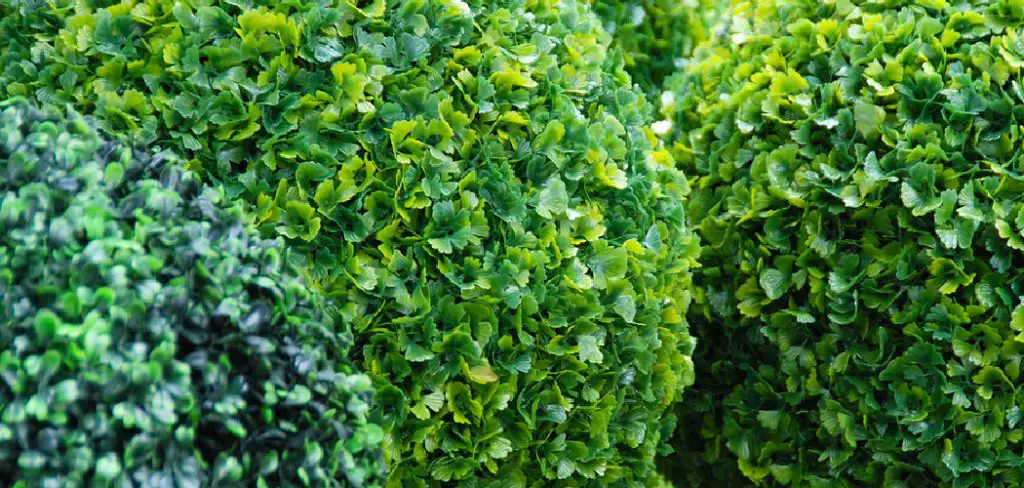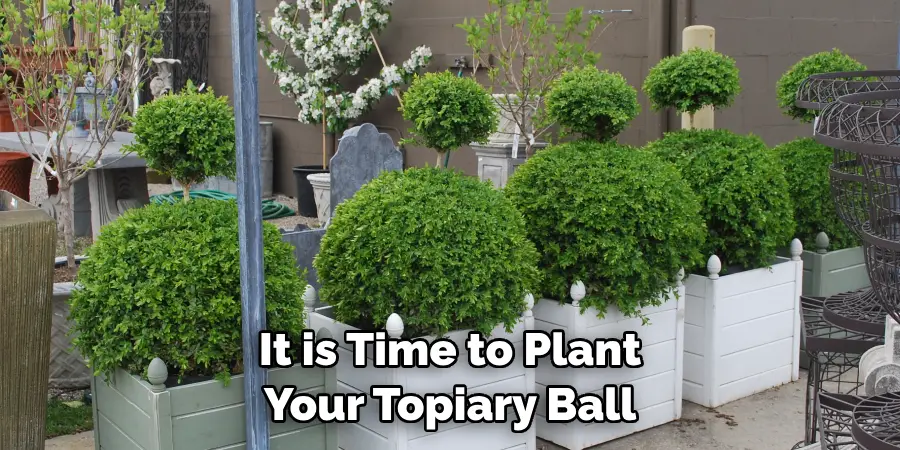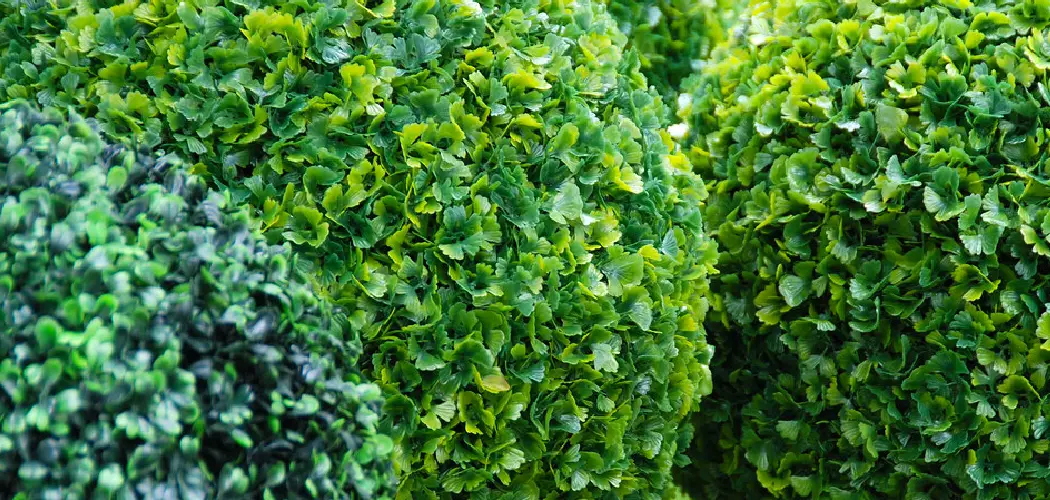Crafting topiary balls is an artful endeavor that transforms gardens and living spaces into whimsical displays of sculpted greenery. Whether you’re looking to add a touch of charm to your outdoor landscape or seeking a creative indoor accent, learning how to make topiary balls is a rewarding and imaginative pursuit. This guide serves as a roadmap through the intricate process of shaping and grooming foliage into spherical masterpieces.

From selecting the right plants for your topiary vision to mastering pruning techniques that achieve the perfect ball form, we delve into the horticultural intricacies that turn your greenery into living sculptures. Join us on a journey through the world of topiary crafting, where botanical artistry meets garden design, and discover how the creation of these enchanting spheres can elevate your space with a touch of cultivated elegance.
Definition and Purpose of Topiary Balls
Topiary balls are a form of ornamental gardening where shrubs or trees are shaped into a spherical, ball-like shape. This art form has been around since ancient Roman times and continues to be enjoyed by many gardeners today.
The purpose of creating topiary balls is to add structure, visual interest and character to gardens. These green sculptures can be used to define pathways, borders, or simply as decorative elements in a garden. They can also serve as focal points and draw the eye towards certain areas of a garden.
Not only do topiary balls add an artistic touch to outdoor spaces, but they also have practical benefits. By pruning and shaping plants into these dense spherical shapes, it allows for better air circulation and light penetration, which can result in healthier and stronger plants.

The process of creating topiary balls requires patience, skill and creativity. Each ball is unique as it depends on the plant species used, the size and shape of the ball desired, and the gardener’s vision. With proper care and maintenance, topiary balls can last for many years to come, providing a lasting impact on any garden.
10 Methods How to Make Topiary Balls
1. Choose the Right Plant
The first step in making a topiary ball is to choose the right plant. The most common plants used for making topiary balls are boxwood, yew, and holly. These plants are ideal because they can be easily trimmed and shaped into a ball shape. Make sure to select healthy plants that are free from disease or pests.
2. Select the Pot
Once you have chosen your plant, you will need to select a pot for it to grow in. The pot should have drainage holes at the bottom so that excess water can escape and the roots of the plant don’t become waterlogged. It is also important to make sure that the pot is large enough for your topiary ball to fit comfortably inside with room for growth.
3. Prepare Soil
Before planting your topiary ball, you will need to prepare the soil by adding organic matter such as compost or peat moss. This will help to provide nutrients for your plant and improve drainage so that excess water can escape from the pot more easily. Make sure to mix the soil thoroughly before planting your topiary ball.
4. Plant Your Topiary Ball
Once you have prepared the soil, it is time to plant your topiary ball in its pot. Gently remove it from its container and place it into its new home, making sure that all of its roots are covered with soil and gently pressing down on them so that they are securely planted in their new environment.

5. Water Regularly
It is important to water your topiary ball regularly in order to keep it healthy and ensure that it grows properly into a beautiful round shape over time. Make sure not to overwater as this can lead to root rot or other problems with your plant’s health. Aim for a schedule of watering every two days, if possible, during dry periods or when temperatures rise above 80 degrees Fahrenheit (26 degrees Celsius). During cooler weather, once a week should be sufficient watering for your topiary ball’s needs.
6. Trim Regularly
In order for your topiary ball to maintain its round shape over time, you will need to trim off any stray branches or leaves regularly using sharp pruning shears or scissors designed specifically for this purpose. Be careful not to trim too much at one time as this could cause damage or stress out your plant unnecessarily, causing slow growth or even death if done too often or incorrectly without proper knowledge of how much each individual type of plant requires trimming-wise.
7. Fertilize Regularly
Fertilizing regularly is an important part of caring for any type of potted plant, including topiary balls! Choose an all-purpose fertilizer formulated specifically for use on indoor plants such as those found in containers like yours and apply according to package instructions every few weeks during active growing periods such as springtime when temperatures stay relatively warm consistently throughout day/night cycles.

8. Keep Away From Direct Sunlight
Topiaries should be kept away from direct sunlight as much as possible since intense light exposure can cause burning on leaves, which leads them to turn yellowish brown coloration instead of the vibrant green hues desired . Try placing near windows with curtains/blinds, providing adequate light but not too much direct sun rays hitting directly onto the surface area where foliage resides.
9. Monitor For Pests & Diseases
Pests & diseases are, unfortunately, common problems faced by gardeners who grow their own plants indoors & outdoors alike. Keep an eye out for signs such as wilting leaves, discoloration, webbing around stems & other suspicious activity indicative of potential infestations or fungal infections requiring immediate treatment with appropriate solutions depending upon the severity level present.
10. Repot When Necessary
Repotting may be necessary if roots start becoming visible through the drainage holes at the bottom of the pot, indicating they’ve outgrown the current vessel size. Choose a new container slightly larger than the previous one, filled again with fresh soil mixture prepared earlier, then carefully transfer the existing root system into the new home while removing the old dirt particles left behind before finishing up the task by watering afterward.
Things to Consider When Making Topiary Balls
If you’re looking to add a touch of elegance and whimsy to your garden, then topiary balls are the perfect choice. They are versatile, easy to maintain, and can be made in a variety of sizes and shapes. Before you start creating your own topiary balls, here are some things to consider:
Plant Selection
When it comes to making topiary balls, not all plants are created equal. You need to choose a plant that has small leaves and grows densely, as this will make shaping and pruning easier. Some common plants used for topiary balls include boxwood, yew, holly, privet, and myrtle. It’s important to also consider the climate and conditions of your garden to ensure the plant will thrive in that environment.
Tools and Materials
To create topiary balls, you’ll need a variety of tools and materials. These include gardening shears, twine or wire, stakes, and soil. It’s important to make sure your tools are sharp to make clean cuts and prevent damage to the plant. You may also want to invest in a topiary frame, which can help guide the shape of your ball.
Shape and Size
Topiary balls come in all shapes and sizes, from small spheres to larger oblong shapes. When choosing the size and shape of your topiary ball, consider the space you have available in your garden. Smaller balls can be used to decorate flower beds or containers, while larger ones can make a statement as a standalone piece. You may also want to consider the overall aesthetic of your garden and choose a shape that complements it.
Maintenance
While topiary balls are relatively easy to maintain, they do require some upkeep to keep their shape and health. Regular pruning is necessary to maintain the desired shape and density of the ball. This is especially important during the growing season when plants are actively growing. It’s also important to water and fertilize regularly to ensure the plant stays healthy.

Conclusion
In conclusion, creating topiary balls can be a wonderful way to add a unique touch to your front porch or garden. Not only are they pretty to look at, but they are also easy and cost-effective to make. With the right supplies and a bit of instruction, any DIYer can quickly learn how to make these three-dimensional works of art that will undoubtedly bring life and beauty to any outdoor space.
Whether you’re an experienced green thumb or just getting started with gardening projects, making topiary balls is something both beginners and experts can easily do. Take the time today to create some beautiful topiary balls for your space, and you’ll love the results! You can find video tutorials online outlining step-by-step instructions on how to make topiary balls if you need help getting started. So what are you waiting for? Start crafting away today!
You can check it out to Make Cone Christmas Trees

